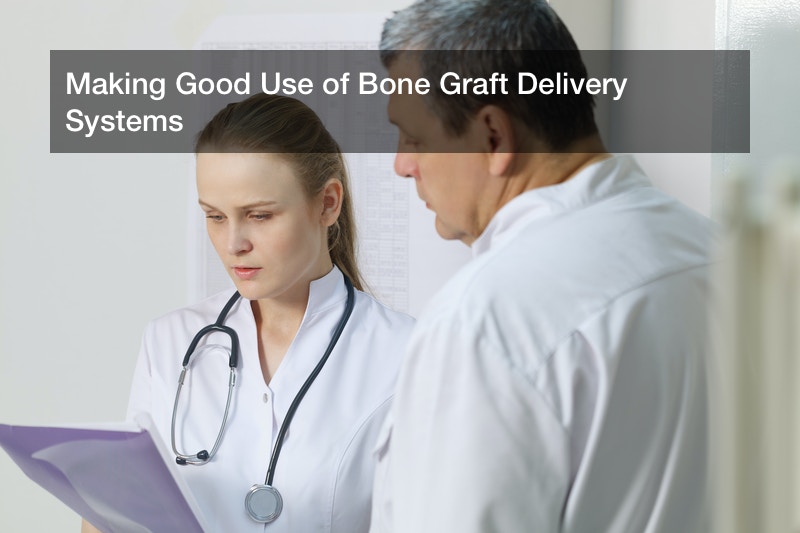
The modern American medical industry is enormous and quite varied, and the United States is a world leader in the medical supply industry. In fact, the United States alone accounts for 40% of all medical supplies on the worldwide market. Surgeons and doctors can take care of heart and kidney transplants, broken bones, and much more, and they can even perform bone grafts. A bone graft may help a patient recover from a badly broken bone, and this can restore the patient’s mobility. A bone graft delivery system may be quite simple and effective to use, and surgeons armed with innovative bone graft delivery systems may find these devices rather easy to use. Such bone graft delivery systems can be ordered on the huge medical supply market by a hospital’s staff, and a surgeon can use a bone graft delivery system for allografts and autografts alike. Bone grafting can be done with either a patient’s own tissues or bone matter from a donor, and there are reasons to consider each route. Synthetic bone is sometimes used, as well.
Bone Health Today
The health of your skeleton is not to be taken for granted, and even the toughest bones in the body may sometimes break or suffer from disease or cancer. How often do Americans need help with their bones, and why? Bone grafts may be delivered for a number of reasons, but four reasons are the most common. Some patients need them for cases of multiple fractures that have not healed properly, or they need fusion for healing two bones across a damaged joint. Some patients may need bone regeneration after they have suffered a disease or injury, or they need a bone graft after the implantation of medical devices (such as joint replacements, for example).
Some surveys have been done to see how bone grafts are handled in the United States, and one particular survey was done over 16 years to carefully track this industry. In that time, among two million bone graft patients, 83% of bone grafts involved autogenous bone materials that the surgeons harvested from the patient’s own body. In 17% of cases, artificial bone graft substitutes were used during surgery. In that same study, it was determined that more and more often over time, patients were having artificial bone grafts used on their bodies. But what is the difference between autografts and allografts for bone surgery?
Different Methods for Bone Grafting
A surgeon equipped with an advanced bone graft delivery system may use it for either autografts or allografts, and a patient may describe which method they would rather have used on them during surgery. An autograft transplant is when bone material is harvested from the patient’s own body, and the bone may be derived from a non-essential area such as the jaw bone (done correctly, of course). This guarantees that a live bone with living marrow with the correct blood type is used. The patient’s body will run no risk of rejecting the self-donor material.
Meanwhile, an allograft is performed when the bone graft tissue came from a different person’s body. In some cases, this tissue may be live, such as when another patient in the hospital just underwent an amputation. Often, the donor material is from a deceased organ donor, and the bone does not have live marrow and thus matching blood types is not an issue. When a deceased person’s bones are harvested for this purpose, the doctors will test those bones and make sure that there is no issue with them. Should the bones be clean and safe to use, they can be put in cold storage until a live patient will need them. The material can then be grafted.
A surgeon will make in incision over the operation area, and use a bone graft delivery system to place the correct amount of bone material in the right place. Not only that, but the doctor will also use screws, plates, and threads to help keep the new bone material snugly in place, and help prevent swelling or other issues. The patient’s body is then closed up, and that patient’s body may spend some time adjusting to the grafted bone material. Some swelling may be typical.
